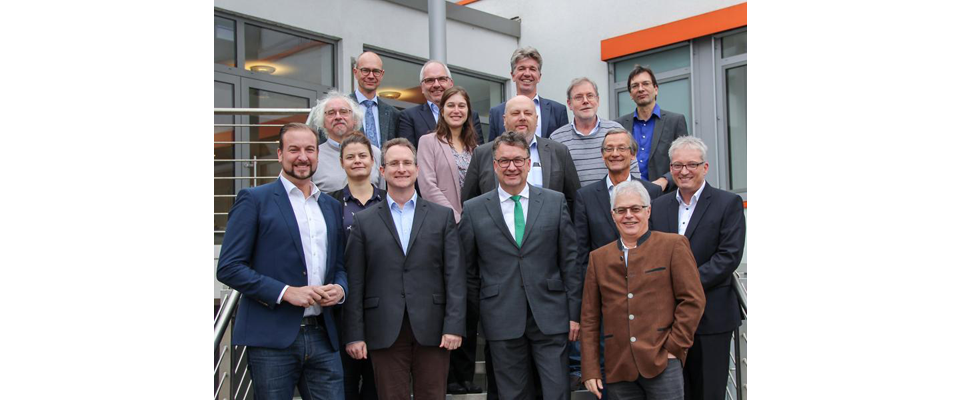"Too many plastic waste materials are not used or get into soils and oceans. Handling, perception and management with plastics must change. This is where the Fraunhofer institutes UMSICHT, IAP, ICT, IML and LBF come in with the cluster, "says Prof. Dr. med. Eckhard Weidner, Head of the Fraunhofer UMSICHT and the Cluster Circular Plastics Economy. "The aim is to build up research and development platforms in order to enable the entire value-added chain of plastic to change from the previous linear to circular economy. We will develop prototypes for new plastics, additives and compounds. Demonstrating how products with circular properties will look like using reusable packaging for online commerce. Plant and feedstock recycling will be strengthened through advanced technologies and digital systems. This includes digitally tracking materials and products so that producers and recyclers can make faster and better decisions about effective circulatory options. Everything according to the principles of the circular economy."
The plastics industry must become circular
The basic idea for the transformation from linear to circular economy is simple: reduce the extraction of fossil resources, avoid end-of-life losses and at the same time enable a real recycling. Implementation is complex: Circular economics is more than just increasing efficiency and recycling; it does not address closed-loop systems alone but lifecycle-wide circular product systems. To date there are no suitable routes for networking across value-added stages and lifecycle phases.
Interlinking of research and business models
"Our research is geared to the needs of the market and society. It is important to involve all players from the plastics producing and processing industry, consumer goods and trading companies to the circular economy and service providers at an early stage. We will rapidly develop a circular assessment in which stakeholders and scientists assess the circular properties of products in various dialog formats - to determine the direction for innovation." says Dr. Hartmut Pflaum from the Fraunhofer UMSICHT, head of the cluster's office.
Structure of the cluster Circular Plastics Economy
In the three divisions "Materials", "Systems" and "Business", each with two research departments, interdisciplinary teams will interlink research and business models.
Fraunhofer Cluster of Excellence as virtual institutes
When it comes to innovation-determining, system- and location-relevant topics, it is crucial to quickly achieve excellence. In addition to the four "Advanced Photon Sources", "Immune-Mediated Diseases", "Programmable Materials" and "Cognitive Internet Technologies" clusters, two new ones will be added in 2018: In addition to Circular Plastics Economy, INES - Integrated Energy Systems intends to innovate and contribute to the global energy transition.
With the establishment of the "Circular Plastics Economy" cluster, the Fraunhofer-Gesellschaft is positioning itself as the central contact point for technological and systemic issues in the transformation to circular economy.
Infobox: Definition of the Circular Economy by Fraunhofer UMSICHT
"In a circular economy the substances used remain in a material cycle beyond the life cycle of goods. Waste, emission, dissipative losses and also the extraction of raw materials from the environment should be reduced as much as possible. Important elements for the implementation of a circular economy are the re-use of goods, the recycling of materials and a design, which enables a circulation without loss of quality. At the same time, an accumulation of substances that make circulation more difficult and the accumulation of pollutants must be avoided. The useful life of goods should be as long and their return to the cycle as fast as possible.
A secondary condition, that determines the quality of a circular economy, is the lowest possible energy demand. It is ideally covered by renewable resources to maintain the cycle. Substances that can not be recycled should be sent for energy recovery.
Materials that can not avoid dissipative losses should be degradable.
The concept of the circular economy can be applied equally to regions, sectors, companies or individual goods."




